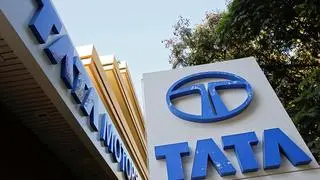Central and State government employees, who were made to subscribe to the National Pension Scheme (NPS), do not have too much to complain about. For, these schemes have delivered far higher returns than the Employees’ Provident Fund Organisation (EPFO) despite following a rather conservative investment strategy.
Since April 1, the Pension Fund Regulatory and Development Authority (PFRDA) has given more investment options under the NPS to Central government employees, making the product more attractive.
The Centre made NPS available to new entrants in its services, with the exception of the armed forces, with effect from January 1, 2004. Most State governments, too, followed suit.
The pension savings of government subscribers are split and invested equally in the funds managed by three pension fund managers — SBI, LIC and UTI.
They manage separate funds for Central (Scheme-CG) and State government (Scheme-SG) staff. Currently, these funds jointly manage a corpus of around ₹1.1-lakh crore and ₹1.6- lakh crore of Scheme-CG and Scheme-SG, respectively.
The funds allocate up to 15 per cent in equities and the rest in government securities and corporate bonds.
Cautious approach
Despite such a cautious investment mandate, Scheme-CG and Scheme-SG have delivered average annual returns of 9.1 and 9.5 per cent, respectively, over the past 10 years.
This is higher than the average 10-year EPFO return of 8.7 per cent (without considering the tax aspect).
The two NPS schemes have also outperformed conservative hybrid mutual funds that invest up to 25 per cent in equities, in the last five- and 10-year timeframe ( see table ).
Greater flexibility
Following a gazette notification issued by the Finance Ministry on January 31 this year, the PFRDA issued a circular on May 8, allowing Central government subscribers to select any of the eight pension managers to handle their funds.
The investment choices have also been expanded. They can choose from four options under Tier-I — Scheme-G, where investment is primarily in G-Secs; conservative lifecycle funds that park up to 25 per cent in equity and the rest in corporate bonds and G-Secs; moderate lifecycle funds that invest up to 50 per cent in equity; and the existing scheme that had managed the corpus thus far.
While government employees can now increase their equity allocation by opting for the lifecycle funds, these funds restrict the equity allocation based on the age of the subscribers.
Since transferring the existing ₹1.1-lakh-crore corpus of Central government subscribers can impact the market, changing the investment pattern of the legacy corpus may not be possible immediately.
Therefore, the change in pension funds or investment pattern is allowed for incremental flows only. The PFRDA plans to come up with a scheme for the transfer of the accumulated corpus to match the new choices over five years.









Comments
Comments have to be in English, and in full sentences. They cannot be abusive or personal. Please abide by our community guidelines for posting your comments.
We have migrated to a new commenting platform. If you are already a registered user of TheHindu Businessline and logged in, you may continue to engage with our articles. If you do not have an account please register and login to post comments. Users can access their older comments by logging into their accounts on Vuukle.